Peri-urban Delineation and Urban Expansion Quantification
from 2001 to 2021 of Hisar City, India, using Geospatial Techniques
Rahul1* and Kaur, R.2
Department of Geography, Panjab University, Chandigarh, India (160014)

*Corresponding Author
Abstract
As the process of urbanization intensifies, a city expands from its
center to its periphery. Due to the rise in human activities and
population of a city, the physical limit gets stretched to provide
housing along its periphery, resulting in extensive irreversible
land cover alteration in the peri-urban areas. This chaotic and
extensive urbanization in a peri-urban environment drives up the
concerns about assessing and encouraging urban growth in a planned
manner. The paper in a similar vein aims to determine peri-urban
area and examine land cover change in and around the Hisar, an
Indian city, between 2001 and 2021 by using geospatial techniques.
The peri-urban zone of the hisar city has been delineated by
applying the vector-based overlay analysis of different variables.
The urban expansion was analysed with the help of the data acquired
from image classification and by applying Shannon entropy model. The
overall pattern of change in land uses shows that the area under
built-up has increased by 99.17 percent by leaps and bounds. On the
other hand, farmland, vegetation, water bodies and open spaces, are
witnessing a sharp decline of 6.38 percent. The findings suggest
that the built-up areas have substantially doubled from 4,965.12 ha
to 9,889.2 ha throughout the study period. The scattered and random
urbanization on the city outskirts is confirmed by the value of
Shannon's entropy which increased from 1.93 in 2001 to 1.98 in 2021.
The findings of the study would assist the administration and town
planners in recognising the massive urban sprawl in the city and
enable them to execute more effective approach to develop the
peri-urban area.
Keywords: Hisar, Peri-Urban, Peri-Urban Delineation,
Shannon Entropy, Urban Sprawl
1. Introduction
The world's population has significantly increased over a period of
time. The human population has undergone an incredible transformation
during the previous few centuries [1]. There were one billion people in
1800, but today, more than 8 billion people live on the planet Earth.
In mid-November 2022, the global population hit the number of 8
billion. And it is estimated that the worldwide population should rise
to a total of 9.7 billion till 2050, hitting a high of about 10.4
billion in the 2080s [2]. The expanding population leads to the high
degree of urbanization and boost in the number of urban centers
worldwide. As the global population rises, a large number of people
relocate to urban environments from rural settings [3]. Urbanization is
a population concentration phenomenon and it constituted one of the
major processes of global transformation in recent time period [4].
Around the globe, urban areas are home to more people than rural ones.
As per the urbanisation report of the United Nations, the urban areas
are home to the 55 percent of the world's population. This was 25
percent higher than in 1950, when only 30 percent of the global
population lived in urban environments. It is estimated that urban
areas will be home to 68 percent of the world's population by 2050 [5].
The growth of population in urban area has led to the horizontal
expansion of urban centers [6]. As a result of rapid urbanization, the
cities expand beyond their boundaries and give birth to the new census
towns (CTs) and outgrowths (OGs) [6] and[7]. This led to the formation
of transitional zones; such zones are often known as urban, semi-urban,
rural-urban fringe, urban fringe and more recently as peri-urban areas
[7] and [8].
Peri-urban areas are the territories that encircle the core towns and
cities, where urban and rural activities amalgamate with each other and
the land cover is subject to abrupt changes triggered by intensive
human endeavours [9]. As the transitional zone in between the rural and
urban environment, peri-urban areas show a complex integration of land
use that is neither purely rural nor urban in their true meaning [10].
These areas are recognized as the area that fuse the rural and urban
land uses, along with the flow of human, labour, capital, commodity,
and information [11]. By the virtue of their close proximity, urban and
peri-urban areas rely heavily on one another for services and
facilities [12]. These places frequently lose their rural traits as
they successively grow more urbanized [13]. Peri-urban regions are
progressively transformed into urban areas in just a handful of decades
[14]. Furthermore, population expansion and uncontrolled and haphazard
urban development contribute to the urban sprawl that soaks up the land
on the periphery [15]. This is an irreversible and unfavourable pattern
of development that is a primary cause of fear in peri-urban areas
because of inefficient utilization of available land resources.
Planning and analyzing for urban sustainability become more important
in city outskirts with such widespread and unorganized development
[16]. In response to the progressive proliferation of urban centers,
there is constant alteration in the boundary of the peri-urban [17].
Underutilized policy instruments, combined with difficulties in
precisely demarcating peri-urban areas, mislead planners and
policymakers in anticipation of the magnitude and extent of the
boundary of urban sprawl [18]. Thus, it is crucial to develop
peri-urban zones effectively to assist in delineating the projected
boundaries of urban expansion to accommodate prospective planning
priorities [19].
The peri-urban areas are defined as an area of transition between rural
and urban environments, as a transitional zone just lying on the city
edges, it experiences dynamic and rapid growth in terms of demographic,
economic and physical setup [20]. Due to proximity and connectivity with
the urban center, the peri-urban area attracts and witnesses
large-scale projects and developments such as residential buildings,
educational institutions, recreational centers, industrial hubs, IT
parks and airport, etc. The demand for land in the peri-urban regions
is very high among real estate developers, industrialists and
businessmen as the core of the city is congested and the value of land
is also very high [21] and [22]. The process of urbanization is a
blessing as well as a curse for the human sustainability. The advantage
of the urban centers acting as a centripetal force led to the explosive
proliferation of the urban population, along with the physical
expansion as well as spread of urban settlements. The expansion of
urban center occurs in the form of urban sprawl. Urban sprawl is
characterised by its low density, transport dependence, new economic
development [23]. Moreover, most of the development occurred in an
unplanned and haphazard manner, which became a problem for the urban
planners and the existing governing body. It also adversely affects the
natural physical setting and the environment surrounding the urban
center. Urban sprawl has brought about the loss of fertile cultivable
land, open spaces, natural vegetation and water bodies in peri-urban
areas [24]. The expansion of urban areas gradually alters the existing
land use patterns in peri-urban areas [25].
Therefore, there is a dire need for the delineation of peri-urban area
and quantify urban sprawl for better policies, governing systems and
sustainable development. This will also be helpful in the better
utilization of natural resources of peri-urban areas. The main
objectives of this study to delineate the peri-urban area and analyse
of urban sprawl of the city.
2. Study Area
Hisar city is located in western Haryana, with the 29.09°N latitude and
75.43°E longitude. The study area map is depicted with the Figure 1.
The average elevation of the city is 215 meters above the mean sea
level. Due to its continental type climate, Hisar experiences extremely
hot summers and comparatively cool winters. The average annual
temperature is 15.4 °C at the minimum and 32.3 °C at the maximum. The
city is on the edge of the southwest monsoon region. There is about 429
mm of rainfall on average per year, with July and August seeing the most
of it. Hisar city serves as the administrative headquarter of Hisar
district. It is situated 250 km south-west from the state capital
Chandigarh and 160 km to the west from the nation capital, New Delhi.
Due to its strategic geographical location, the city of Hisar is
recognized as a counter-magnet city of the National Capital Region,
serving as a substitute hub for development. The city is conveniently
served by all three means of transportation: airways, railways and
roadways. The national highway 9 connects it with the national capital,
New Delhi and the nation highway 52 connects it with the state capital,
Chandigarh. The airport is on the city outskirts and is undergoing
redevelopment and upgrading to an international cargo airport.
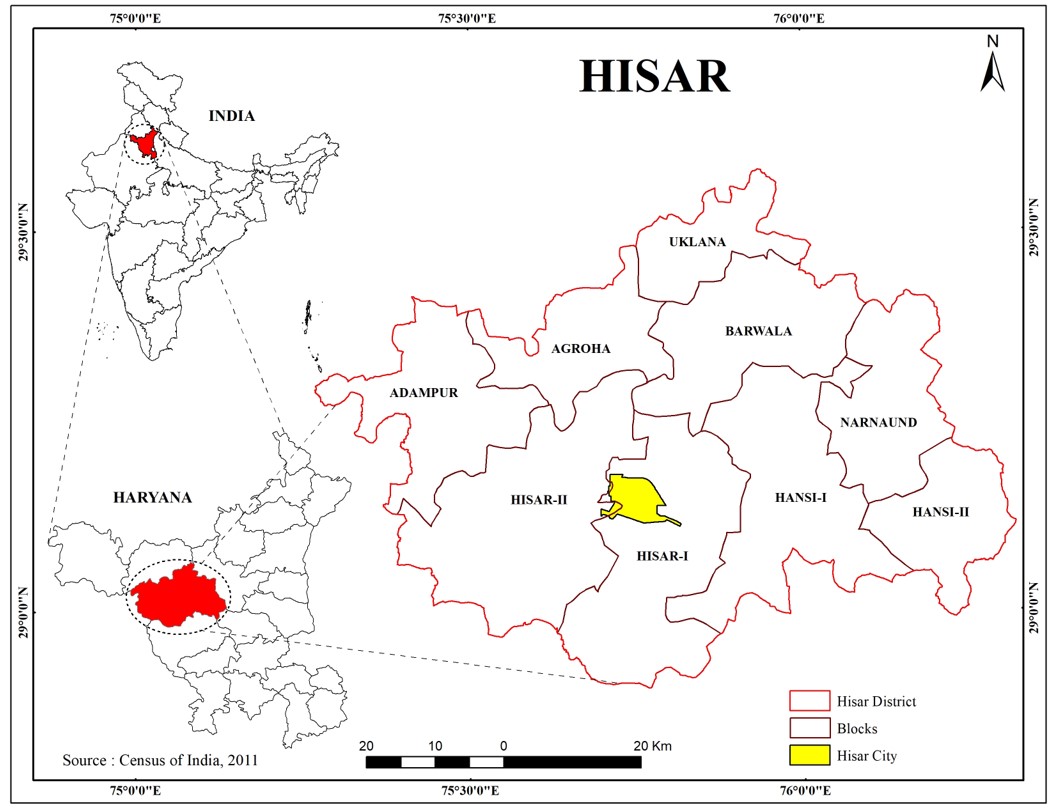
Figure 1: Location of Hisar City, India
Hisar is among the most rapidly growing cities in Haryana and the 141
st most populous city in India. Being a counter-magnet city
of Delhi-NCR (National Capital Region), the basic facilities and
amenities of the city have undergone improvement and attracts a large
number of migrants from nearby areas as well as from the neighbouring
states of Rajasthan and Punjab. The steadily increasing population of
the city led to urban sprawl. Consequently, the city is expanding
outward from its core over the peri-urban region. The periphery of the
Hisar has a considerable number of residential complexes, industries,
research and educational institutions, which transforms the land use
patterns. This entire process results in the substantial land
alteration in the city periphery.
3. Database
While delineating peri-urban areas and quantifying urban sprawl, both
primary as well as secondary sources of information have been utilised.
In the delineation of the peri-urban region of the Hisar city, total
seven variables/criteria from three different dimension, namely
administration, demographics and economics have been used. As the only
source that offers thorough data on each settlement in the nation is
the Census of India, the data for administrative and demographic
dimensions at the level of village were gathered from the Primary
Census Abstract (PCA), Census of India 2011. On the other hand, data on
the economic dimension was collected through a primary survey. In
addition, for the quantification of urban sprawl, the satellite
imageries of Landsat-5 TM for 2001 and Landsat-8 OLI_TRIS for 2021 have
been collected from USGS Earth Explorer
(https://earthexplorer.usgs.gov). The details of acquired satellite
images is shown through Table 1 and analysed with the help of GIS
software.
4. Methodology
The techniques and methodology executed for delineation of peri-urban
areas and analysis of urban expansion in the present study are
illustrated through the flow chat depicted in Figure 2. The study is
broadly divided into three phases: the delineation of peri-urban areas,
detecting changes in built-up land cover, and the quantification of
urban sprawl. The peri-urban area is delineated with the help of seven
variables that were selected after a thorough literature review.
Table 1: Specifications of satellite imageries
|
Satellite
|
Date
|
Path and Row
|
Sensor
|
Spatial Resolution
|
Source
|
|
Landsat 5
|
16/03/2001
|
147/40
|
TM
|
30 Meters
|
USGS
|
|
Landsat 8
|
07/03/2021
|
147/40
|
OLI
|
30 Meters
|
USGS
|
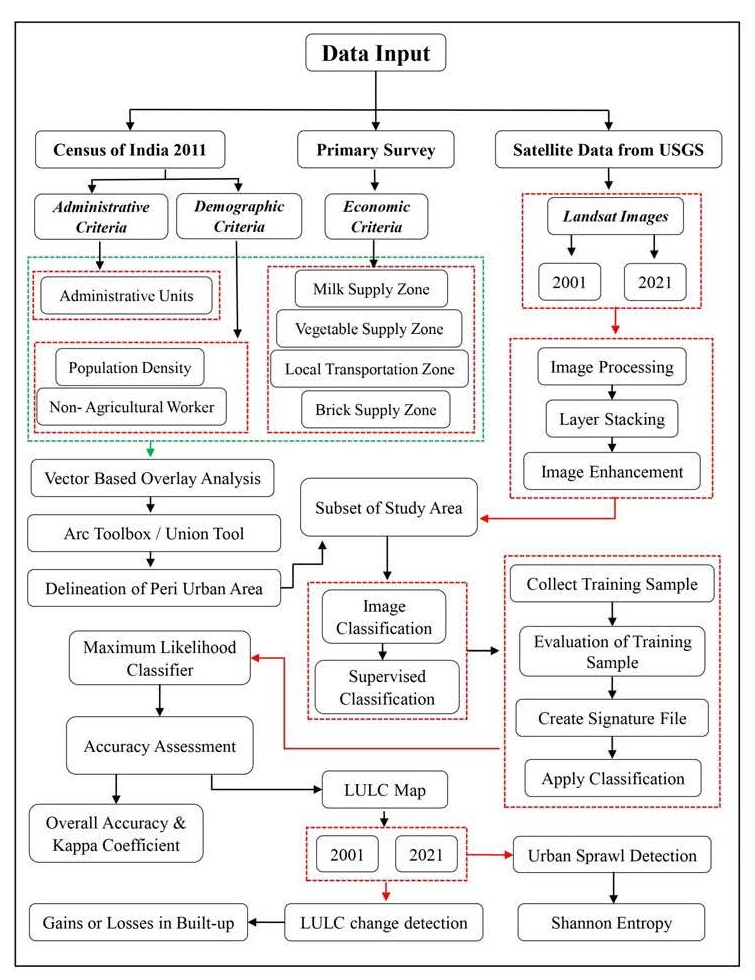
Figure 2: Flowchart of methodology utilized in the
study
Further, the examination of built-up land cover change helps in
computing the shifting of land use between built-up and non-built-up
areas. Shannon entropy has been used for the assessing of urban sprawl.
The following sections go over the minute details of each stage.
4.1 Peri‑urban Area Delineation
The variables for different dimensions selected for the delineation of
the peri-urban area were drawn from literature [6][11][12][16][26] and
[27]. A total of seven variables have been selected from three
dimensions.
These seven variables are: administrative unit or boundary, population
density, non-agricultural workers, milk supply zone, vegetable supply
zone, local transport and brick supply zone. The population density and
percentage of non-agricultural workers of different administrative
units that have been considered in the delineation of peri-urban area
were within the range of twenty-five kilometres from the city center.
The threshold values of population density and percentage of
non-agricultural workers were taken 400 people per sq. km and 40
percent, respectively. Besides, all the census towns that are situated
on the edge of the city have been considered as peri-urban area. For
the delineation of peri-urban area of Hisar city, a vector-based
overlay analysis has been performed on all the criteria that were
selected for the delineation of the peri-urban region of the Hisar
city. The vector overlay was performed by applying union tool in the
analysis tools of the Arc Toolbox. Administrative units are categorized
as peri-urban areas if they meet at least 50 percent of all the
criteria.
4.2 Land Use and Land Cover Change
The acquired Landsat imageries were processed and analyzed by making
use of the geospatial software. Initially, different spectrum bands of
a satellite image were composited to obtain a multispectral image. Then
an area of interest (AOI), that is the delineated peri-urban area of
Hisar, has been masked from the multispectral imagery. After getting
the AOI, the images were processed in order to enhance the image
quality and visual retention. The images have been classified through
the supervised image classification method, by applying the maximum
likelihood classifier. The training sets are collected using Google
Earth Pro and pre-existing familiarity of study area. The imagery has
been categorized in six categories: water bodies, vegetation,
agriculture, built-up areas, open land, and mining. The image
classification has been followed by the accuracy assessment; accuracy
was assessed across the board using 250 ground truthing points. The
images of 2001 and 2021 have been classified, with overall accuracy of
91.20 and 94 percent accuracy, respectively, and kappa coefficients of
0.8911 and 0.9269, respectively. Ultimately, the LULC maps were created
and the map statistics were used for supplementary analysis. After
that, land use and land cover change detection has been performed
between the classified images of 2001 and 2021. It is a post-image
classification approach used to figure out the manner in which land use
and land cover have changed and developed over time. The image overlay
approach for change detection was used in the present study. This method
is employed in this study, for identifying the gains and losses to the
built-up area from various other classes.
4.3 Urban Sprawl Detection
The Shannon entropy index has been implemented to determine urban
sprawl. It is extensively adopted to calculate the spatial
concentration and dispersion of a particular phenomenon [12] and [28].
In the present study, Shannon entropy has been incorporated for
determining the extent to which built-up area is dispersed or
concentrated. The values of Shannon entropy range between 0 and log(n).
Entropy values toward 0 suggest a highly compact concentrated built-up
area, whereas values near log(n) imply an excessively dispersed
distribution of built-up area [29]. The midway point value of log(n) is
taken into account as threshold value; consequently, if the value of
entropy is above the value of threshold, then the city is considered to
be sprawling [30] and [31]. The Shannon entropy is calculated with the
Equation 1:

Equation 1
Where: Hn = Shannon entropy
Pi = Proportion of built-up area in
ith
zone
n = Number of Zones
5. Results
5.1 Delineation of Peri-Urban Area
The peri-urban area of Hisar has been delineated by applying a
vector-based overlay analysis of different criteria. In this analysis,
a total of seven variables have been used to delineate the peri-urban
area. These variables include administrative map, population density,
non-agricultural workers, milk supply zone, vegetable supply zone,
local transportation and brick kiln zone.
The administrative unit serves as a basis for defining the peri-urban
region since it includes neighbouring areas where urban sprawl is
expected to develop, resulting in land modifications on the city's
outskirts [12] and [32]. As the population grows and the city expands,
several new census towns develop on the periphery of the city; these
towns are categorized as peri-urban area [8] and [33]. Hisar, an
emerging prominent city, is surrounded by five census towns: Gangwa,
Satrod Khurd, Satrod Khas, Satrod Kalan, and Mayyer. These towns have
urban characteristics but rural governance. The location of these towns
is shown in Figure 3. These towns are classified as peri-urban area of
Hisar city in response to their strong links and proximity to the city.
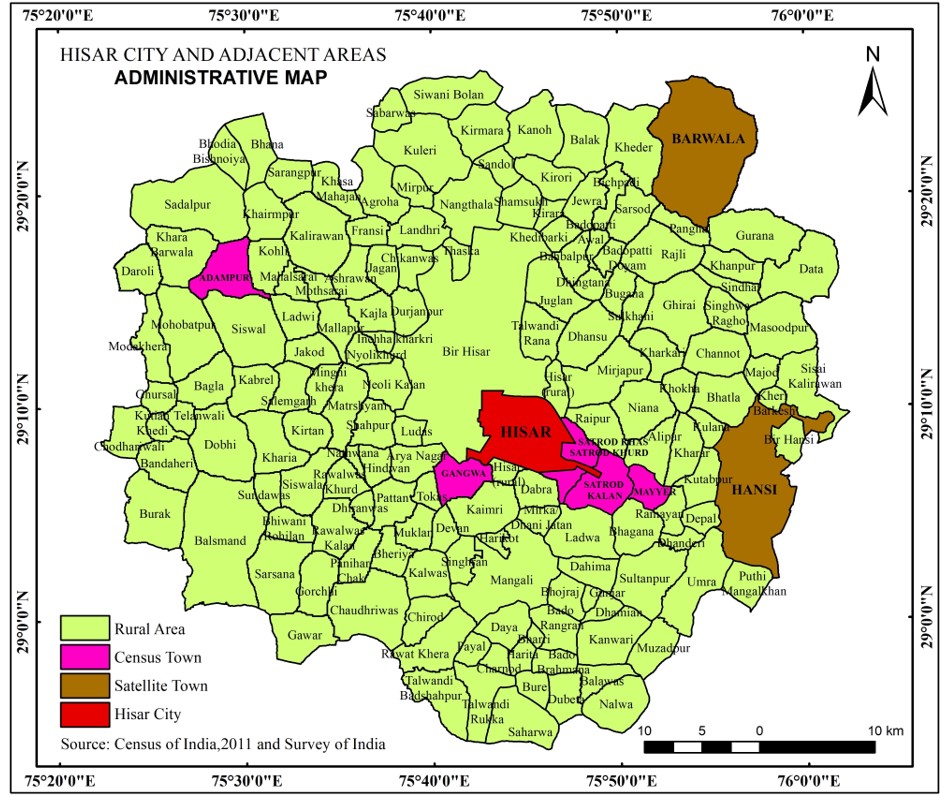
Figure 3: Administrative variable: Hisar city and
adjacent areas

Figure 4: Demographic variables: (a) Population
density; (b) Percentage of non-agricultural workers
Demographic variables have considerable importance in defining the
peri-urban region. Population density is a reliable indicator to gauge
the importance of a city [34] and [35]. The population in and around
the city increases over time due to the pull factor of the city [36].
It is clearly visible on the map in Figure 4(a) that the area around
the city has a higher density than the other area. As we move away from
the city, generally, the population density decreases. The population
density of 400 person/km2 is considered the outer limit of
the peri-urban region.
Non-agricultural workers are an essential component and an integral
part of the peri-urban occupational structure. Indeed, a significant
number of non-agricultural workers in the overall working population of
a peri-urban area seems like a direct indication of urban influence.
The administrative units with a higher percentage of non-agricultural
workers, more than 40 percent, indicate peri-urban areas as they
exhibit a stronger urban influence. The distribution of the
non-agricultural population is extended more in the north, west, and
east directions shown in Figure 4(b).
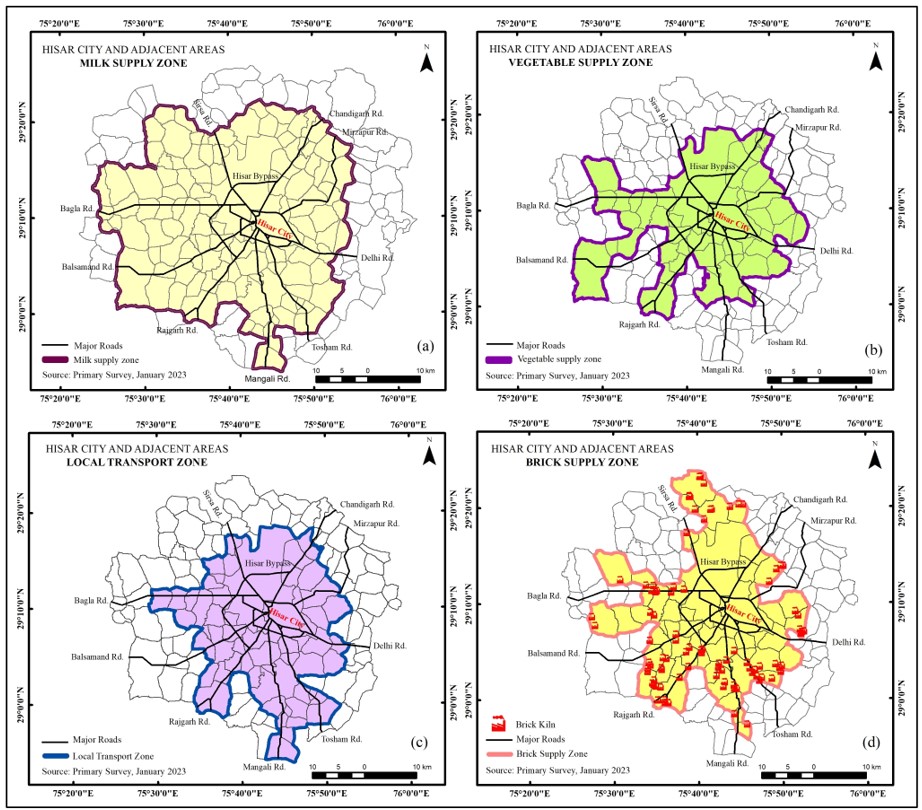
Figure 5: Zone boundary of economic variables: (a) Milk
supply zone; (b) Vegetable supply zone; (c) Local transport zone: (d) Brick supply zone
The city enjoys a two-way economic relationship with the nearby areas.
The peri-urban area thus, enjoys a close connection with the main city
by means of the inflow and outflow of goods and services. The city
periphery and adjacent rural areas are inextricably intertwined with the
city economy and undergo continuous change in their economic activity.
Four economic variables are included for the delineation of peri-urban
area. The boundary of all economic variables has been demarcated on
the basis of the primary survey. The boundary of economic variables
shows the outer limit of the local phenomena. The milk supply is one of
the most important functional links between the city and its
surroundings. Milk is one of the most perishable products produced in
the countryside for the urban market. The milk supply zone to Hisar
city reveals that milk is supplied from the villages that are located
15 to 35 kilometres away from the city center.
The milk supply zone is more stretched in north, west, and south
directions due to the absence of significant towns near the city. The
sheer presence of Hansi town causes the supply zone to be less expanded
in the east. This milk supply zone includes 109 villages and 5 census
towns in the proximity of Hisar city depicted in Figure 5(a).
Vegetables, in particular, have drawn considerable attention, owing to
the fact that they are incredibly perishable and are typically farmed
near where they are going to be consumed. The vegetable production is
primarily concentrated in peri-urban zones with significant urban
populations and high-income elasticity of demand [37]. Vegetable farming
is widespread in the surrounding area of Hisar city. The residents of
the city get their supply indirectly through vegetable markets. The
vegetable supply zone encompasses Hisar city, five census towns and 38
adjacent villages as shown in Figure 5(b). This zone generally extends
along the key roads.

Figure 6: Peri urban extraction: (a) Superimposed
variables (b) Peri-urban area of Hisar
The local transportation service zone plays an indispensable role in
indicating the flow of people and goods between the city core and its
outskirts. Due to the intense connection between the city and traffic
flow, local transport is included in the delineation of peri-urban
area. The local transport mode includes autorickshaw and e-rickshaw. As
roads radiate in all directions from the city as shown on map in Figure
5 (c), the zone is extended in all direction from 15 to 30 km. As we
move away from the city center, the frequency of local transport
decreases. Brick kilns predominantly concentrate on peripheral
locations inside the influence zone of the city. The demand for bricks
in the city met by the brick kiln spread in the adjoining area of the
city up to 30 km. Brick kilns are located along key routes which is
easily depicted through map in Figure 5(d. Brick kilns are more useful
and generate more economic returns than farming in this region. This
zone plays an essential role in the delimitation of the periphery.
In order to accomplish the goal of delineating the peri-urban area of
Hisar city, seven indicators were chosen in total. In the delineation
of the peri-urban area of a Hisar city, a vector-based overlay analysis
was performed for all of the criteria that represent the peri-urban
region of Hisar as shown in Figure 6. Administrative units are
categorized as peri-urban areas if they meet at least 50 percent of the
criteria. On the basis of administrative, demographic, and economic
variables, the peri-urban region Hisar city consists of 49
administrative entities (villages and census towns), covering 776.62
square kilometres (77662 hectares) as viewed in Figure 6. The
peri-urban area stretches from 13 to 23 kilometres from the city
center, its extension is more in the south and west direction as
compared to the east and north direction of the city.
5.2 Land Use and Land Cover (LULC) Change Detection and Urban
Sprawl
The land use and land cover maps for the year 2001 and 2021 have been
prepared to perform LULC change detection and quantifying the urban
sprawl in the Hisar city including its peri-urban area as shown in
Figure 7(a) and (b). The satellite images were classified in the six
categories to study the changes in the built-up class. Then the LULC
map is converted under two major categories i.e., built-up and
non-built-up, by merging all non-built-up classes under one category.
As the maps in Figure 7 show, the overall study area is 82,210.95
hectares (Hisar city and peri-urban area), with a total built-up area
of 4,965.12 hectares in 2001, consisting 6 percent of the total area. On
the other side, non-built-up area in 2001 was 77,245.83 hectares, which
represents 94 percent of the total area. If we take a look at the
spatial distribution of built-up area, it can be seen that out of the
total 4,965.12 hectares of built-up area, 2,114.82 hectares are located
within the Municipal Corporation (MC) boundary of Hisar city, which
constitutes 42 percent of the total built-up area, and the remaining 58
percent is located in the peri-urban region of the city. In 2021, the
scenario was changed, the total area under the built-up was raised to
9,889.2 hectares, which accounts for 12 percent of total area. On the
other hand, the non-built-up area was decreased from 77,245.83 hectares
in 2001 to 72,321.75 hectares in 2021, which represents 88 percent of
the total area. The spatial distribution of built-up area among the
study area shows that 30 percent of built-up area was lying in the
municipal boundary of the city; which accounts for 2,996.19 hectares of
built-up area, the remaining 70 percent was spread in peri-urban area
of city.
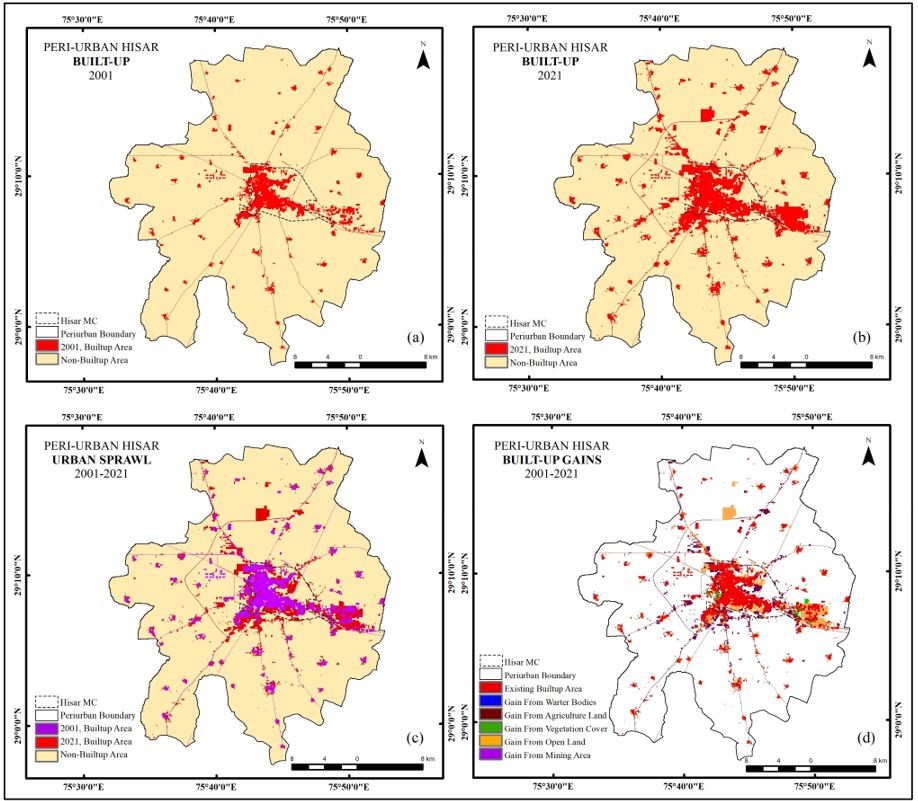
Figure 7: Built up area, urban sprawl and built-up
gain: (a) Built up area in 2001; (b) Built up area in 2021;
(c) Urban sprawl from 2001 to 2021; (d) Built-up area gain from 2001 to
2021
The comparison of built-up areas in 2001 and 2021 as shown inTable 2
and Figure 8(c) illustrated that the built-up area expanded from
4,965.12 hectares in 2001 to 9,889.2 hectares in 2021. Over a
two-decade period, the built-up area increased by 4,924.08 hectares,
nearly double the built-up area in 2001.
During the period of 2001-2021, most of the built-up expansion occurred
in the peri-urban region of Hisar. It is observed that in 2001, over 40
percent of built-up area was consolidated within the municipal boundary
of Hisar; however, by 2021, only 30 percent of the built-up area
remained within the MC limits of Hisar. The expansion of census towns on
the outskirts of cities, establishment of residential buildings,
educational institutes, and a large number of industries were the
primary reasons for the growing share of built-up area in the
peri-urban region. It is also noted that most of the built-up expansion
occurred along the major highways, i.e., national highways 9 and 52.
In the period of two decades between 2001 and 2021, if we were studying
the gains and losses in the built-up region, we would find that there
were no losses in the built-up area as shown in Figure 7(d). It denotes
that the existing built-up area was not transformed into a
non-built-up.
The total built-up gains during the two decades were 4,965.12 hectares,
out of which the maximum gains were from open land that was 2,691.99
hectares, which accounts for 54.67 percent of total built-up gains,
followed by gains from agriculture land, which accounts for 2,049.57
hectares or 41.62 percent. The remaining small proportion of 3.7
percent of built-up gain came from the vegetation cover, water bodies
and mining area, which were 149.22, 18.81 and 14.49 hectares or 3.03,
0.38 and 0.29 percent, respectively as shown in Table 3. This gain
indicates the magnitude of non-built-up land which has been transformed
into built-up area.
Table 2: Analysis of land cover transformation
|
Categories
|
2001
Area (ha)
|
2021
Area (ha)
|
Change
Area (ha)
|
Change
(percent)
|
|
Total Built-up area
|
4,965.12
|
9,889.20
|
4,924.08
|
99.17
|
|
Total Non-built-up area
|
77,245.83
|
72,321.75
|
-4,924.08
|
-6.38
|
|
Built-up area in MC
|
2,114.82
|
2,996.19
|
881.37
|
41.67
|
|
Non-built-up area in MC
|
2,434.05
|
1,552.68
|
-881.37
|
-36.21
|
Table 3: Gains to the built-up Area
|
Categories
(From Built-up Gains)
|
Area
(ha)
|
Percent to total built-up Gains
|
|
Water Bodies
|
18.81
|
0.38
|
|
Agricultural Land
|
2,049.57
|
41.62
|
|
Vegetation Cover
|
149.22
|
3.03
|
|
Open Land
|
2,691.99
|
54.67
|
|
Mining Area
|
14.49
|
0.29
|
|
Total Gain
|
4,924.08
|
100.00
|
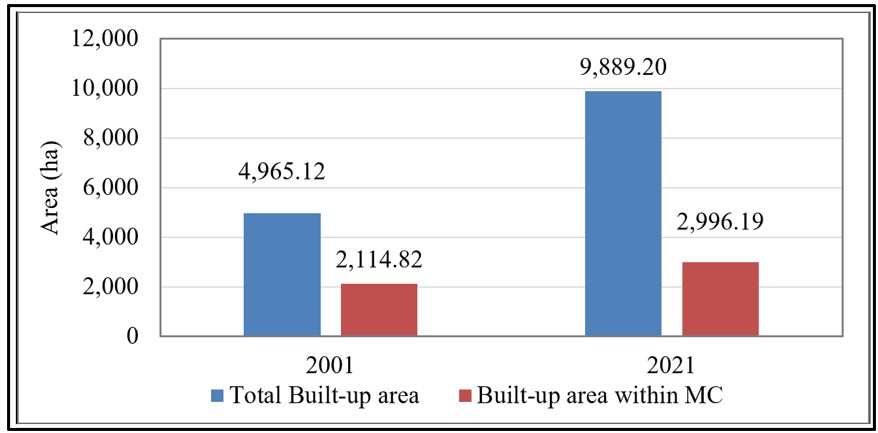
Figure 8: Built-up areas in 2001 and 2021

Figure 9: Built-up area divided into eight directional
zones (a) 2001 (b) 2021
5.3 Urban Sprawl Detection
The urban sprawl in the demarcated peri-urban area was analysed by
applying Shannon's entropy index. It is a common metric for assessing
the magnitude of urban sprawl [38]. This index is used to measure the
dispersion and concentration level of built-up areas [29][30] and
[31]. In the present study, as Figure 9(a) and 9(b) illustrates that
the study area was divided into 8 zones after taking central point of
municipal boundary as the central node, to calculate the shannon
entropy. So, the value of log(nis 2.08 for n = 8). The
years 2001 and 2021 were taken into account to figure out the entropy
values. In the year 2001 the value of shannon entropy was 1.93, which
increased to 1.98 in 2021. Urban sprawl is prevalent in the peri-urban
areas of Hisar, as shown by the entropy value, which is farther away
from 0 and closer to log(n). Additionally, the sprawling nature has
been demonstrated by the values of entropy that were higher than the
threshold values. Urban sprawl appears to have increased during the
research period, based on the overall trend of entropy index outcomes
from 2001 to 2021.
6. Discussion
In Hisar and its peri-urban area, the alteration in land cover occurred
quite significantly between 2001 and 2021. Built-up area expanded
considerably, from 4,965.12 hectares in 2001 to 9,889.2 hectares in
2021. The diminution of non-built-up areas (mainly agricultural land
and open area) was the main factor contributing to the increase in
built-up areas. Such a rapid drop in non-built-up land cover poses a
major threat to the urban livelihood. Similar patterns of urban
expansion can be observed in other Indian mid-sized cities [12] and
[39]. Hisar city serves as a counter magnet to the National Capital
Region, developing as a substitute hub for Delhi. The growth and
development of the city provide new opportunities for the people, that
cause a further rise in the magnitude of physical expansion and
population growth of the city. The rapid growth in population, either
naturally or by migration, put extra pressure on the limited land or
services of the city resulting in high land value and consumption. This
all-causes pressure on the peri-urban area of the city. In the case of
Hisar, the basic facilities and amenities attract not only neighbouring
people but also those from the neighbouring states of Punjab and
Rajasthan. The expectations of better employment, healthcare and
education have put a strain on the city's non-elastic resources. Owing
to the congestion, the city boundaries grew outwards and new residential
colonies and sectors developed in the east, south-west and north-west
directions. During the study period five census towns were developed on
the city outskirts, with four in the eastern direction and one in the
southern direction. The outskirts of the Hisar city provided the means
for the establishment of several manufacturing industries, educational
and research institutions and also an international airport. The major
transport routes that connect the city with the national capital, New
Delhi, state capital, Chandigarh and to other major cities provide
opportunities for development and hence major land alteration occurs
along these transport routes.
The values of Shannon entropy proved the prevalence of urban sprawl in
the peri-urban area of Hisar. On the other hand, scattered development
was the most common type of urban sprawl in the periphery, depicting
that erratic and low-density urban expansion is predominant. The
primary factor contributing to such kind of growth is the dispersed
pattern of the settlement and industrial expansion in the peri-urban
areas. Such a kind of urban expansion phenomenon degrades the
surrounding environment and modifies the natural landscape of the urban
agglomeration in an irreversible manner. The process of development is
taking place at the cost of adjacent open and prime agricultural land.
7. Conclusion
The study demonstrated the application of geospatial tools to analyse
the dynamics of urban sprawl in peri-urban areas by using primary data,
census data, and Landsat imageries. This paper primarily looked at the
delineation of peri-urban region, evaluation of land cover change, and
identification of urban sprawl in Hisar. The peri-urban zone of Hisar
was identified by utilizing seven variables from three different
dimensions by employing an overlay analysis technique. This zone is
more extensive in the north, west and south directions as the absence
of significant towns nearer to the city in this direction. The mere
existence of Hansi town limits the extension of the zone to the east.
The land cover change analysis showed that open and agricultural areas
were largely lost to rapid built-up expansion. As a result, throughout
the research period, the percentage of built-up land cover increased by
99.17 percent, whereas the percentage of non-built-up cover fell by
6.38 percent. The environment and development are at odds because of
quickly and irreversibly changing land cover in the study area. Urban
sprawl was evident in the values of the Shannon entropy index for
peri-urban areas. This also reveals that the built-up area is spreading
in a dispersed manner mainly, along the major transport routes.
This study can serve as a future guide for the urban planners and
relevant agencies in the planned development of peri-urban Hisar.
Further, a potential future research agenda could involve predicting of
urban expansion through machine learning tools.
References
[1] Sadigov, R., (2022). Rapid Growth of the World Population and
its Socioeconomic Results. The Scientific World Journal,
https://doi.org/10.1155/2022/8110229.
[2] Gaigbe-Togbe, V., Bassarsky, L., Gu, D., Spoorenberg, T. and
Zeifman, L., (2022). World Population Prospects 2022.
Department of Economic and Social Affairs, Population Division: New
York, NY, USA. 1-52.
https://doi.org/10.18356/9789210014380.
[3] Leeson, G. W., (2018). The Growth, Ageing and Urbanisation of Our
World. Journal of Population Ageing, Vol. 11, 107-115.
https://doi.org/10.1007/s12062-018-9225-7.
[4] Henderson, V., (2002). Urbanization in Developing Countries.
The World Bank Research Observer
, Vol. 17(1), 89-112.
https://doi.org/10.1093/wbro/17.1.89.
[5] Desa, U., (2018). World Urbanization Prospects 2018.
United Nations Department for Economic and Social Affairs
.
https://www.un.org/development/desa/pd/sites/www.un.org.development.desa.pd/files/files/documents/2020/Jan/un_2018_worldcities_databooklet.pdf.
[6] Dutta, I. and Das, A., (2019). Modeling Dynamics of Peri-Urban
Interface Based on Principal Component Analysis (PCA) and Cluster
Analysis (CA): A Study of English Bazar Urban Agglomeration, West
Bengal. Modeling Earth Systems and Environment, Vol. 5,
613-626.
https://doi.org/10.1007/s40808-018-0554-6.
[7] Shaw, A., (2005). Peri-urban Interface of Indian Cities: Growth,
Governance and Local Initiatives.
Economic and Political Weekly
, 129-136.
https://www.jstor.org/stable/4416042.
[8] Gowda, U. R., Chandrakanth, M. G., Srikanthamurthy, P. S., Yadav,
C. G., Nagaraj, N. and Channaveer, (2012). Economics of Peri-Urban
Agriculture: Case of Magadi off Bangalore.
Economic and Political Weekly
, 75-80.
https://doi.org/10.4324/9780080454528-20.
[9] McGregor, D. and Simon, D., (Eds.). (2012).
The Peri-Urban Interface: Approaches To Sustainable Natural and
Human Resource Use
. Routledge.
[10] Ravetz, J., Fertner, C. and Nielsen, T.
S., (2012). The Dynamics of Peri-Urbanization.
Peri-urban futures: Scenarios and Models for Land Use Change in
Europe
, 13-44.
https://doi.org/10.1007/978-3-642-30529-0_2.
[11] Mondal, D. and Sen, S., (2020). Methodological Dimensions of
Delineating Peri-Urban Areas: The Case of Kolkata Metropolis.
Environment and Urbanization ASIA
, Vol. 11(2), 183-194.
https://doi.org/10.1177/0975425320938519.
[12] Chettry, V., (2022). Peri-urban Area
Delineation and Urban Sprawl Quantification in Thiruvananthapuram Urban
Agglomeration, India, from 2001 to 2021 Using Geoinformatics.
Applied Geomatics, Vol. 14(4), 639-652.
https://doi.org/10.1007/s12518-022-00460-0.
[13] Mortoja, M. G., Yigitcanlar, T. and Mayere, S., (2020). What is
the Most Suitable Methodological Approach to Demarcate Peri-Urban
Areas? A Systematic Review of the Literature. Land Use Policy,
Vol. 95.
https://doi.org/10.1016/j.landusepol.2020.104601.
[14] Sutton, P. C., Cova, T. J. and Elvidge, C. D., (2006). Mapping
“Exurbia” in the Conterminous United States Using Nighttime Satellite
Imagery. Geocarto International, Vol. 21(2), 39-45.
https://doi.org/10.1080/10106040608542382.
[15] Kar, R., Reddy, G. O., Kumar, N. and Singh, S. K., (2018).
Monitoring Spatio-Temporal Dynamics of Urban and Peri-Urban Landscape
Using Remote Sensing and GIS-A Case Study from Central India.
The Egyptian Journal of Remote Sensing and Space Science
, Vol. 21(3), 401-411.
https://doi.org/10.1016/j.ejrs.2017.12.006.
[16] Goncalves, J., Gomes, M. C., Ezequiel, S., Moreira, F. and
Loupa-Ramos, I., (2017). Differentiating Peri-Urban Areas: A
Transdisciplinary Approach Towards a Typology. Land Use Policy,
Vol. 63, 331-341.
https://doi.org/10.1016/j.landusepol.2017.01.041.
[17] Maheshwari, B., Singh, V. P. and Thoradeniya, B., (2016).
Balanced Urban Development: Options and Strategies for Liveable
Cities
. Springer Nature.
https://doi.org/10.1007/978-3-319-28112-4_35.
[18] Silva, C., (2018). Auckland’s Urban Sprawl, Policy Ambiguities and
the Peri-Urbanisation to Pukekohe. Urban Science, Vol. 3(1),
1-20.
https://doi.org/10.3390/urbansci3010001.
[19] Danielaini, T. T., Maheshwari, B. and Hagare, D., (2018). Defining
Rural–Urban Interfaces for Understanding Ecohydrological Processes in
West Java, Indonesia: Part I. Development of Methodology to Delineate
Peri-Urban Areas. Ecohydrology & Hydrobiology, Vol. 18(1),
22-36.
https://doi.org/10.1016/j.ecohyd.2017.11.006.
[20] Shaw, A., (2015). Inner-city and Outer-City Neighbourhoods in Kolkata:
Their Changing Dynamics Post Liberalization.
Environment and Urbanization Asia
, Vol. 6(2), 139-153.
https://doi.org/10.1177/0975425315589157.
[21] Tione, S. E. and Holden, S. T., (2020). Urban Proximity, Demand for
Land and Land Shadow Prices in Malawi. Land Use Policy, Vol. 94,
https://doi.org/10.1016/j.landusepol.2020.104509.
[22] Jha, S., Raghuram, S. and Awasthi, S., (2019). Exploring Strategies
for Planned Urban Cluster Development in South Asia.
ADB South Asia Working Paper Series
.
https://doi.org/10.22617/wps190072-2.
[23] Squires, G. D., (Ed.). (2002).
Urban Sprawl: Causes, Consequences, & Policy Responses
. The Urban Institute.
[24] Bhat, P. A., ul Shafiq, M., Mir, A. A. and Ahmed, P., (2017). Urban
Sprawl and its Impact on Landuse/Land Cover Dynamics of Dehradun City,
India. International Journal of Sustain- able Built Environment,
Vol. 6(2), 513-521.
https://doi.org/10.1016/j.ijsbe.2017.10.003.
[25] Biney, E. and Boakye, E., (2021). Urban Sprawl and Its Impact on Land
Use Land Cover Dynamics of Sekondi-Takoradi Metropolitan Assembly, Ghana.
Environmental Challen- ges, Vol. 4.
https://doi.org/10.1016/j.envc.2021.100168.
[26] Mondal, D., (2021). Basic Service Provisioning in Peri-urban India: A
Regional Perspective from Kolkata Metropolis.
Indian Journal of Human Development
, Vol. 15(1), 97-116.
https://doi.org/10.1177/09737030211000930.
[27] Nishara, V. P., Sruthi Krishnan, V. and Firoz, C. M., (2021).
Geo-intelligence-Based Approach for Sustainable Development of Peri-Urban
Areas: A Case Study of Kozhikode City, Kerala (India).
Geo-intelligence for Sustainable Development
, 35-52.
https://doi.org/10.1007/978-981-16-4768-0_3.
[28] Chakraborti, S., Das, D. N., Mondal, B., Shafizadeh-Moghadam, H. and
Feng, Y., (2018). A Neural Network and Landscape Metrics to Propose a
Flexible Urban Growth Boundary: A Case Study.
Ecological indicators
, Vol. 93, 952-965.
https://doi.org/10.1016/j.ecolind.2018.05.036.
[29] Sahana, M., Hong, H. and Sajjad, H., (2018). Analyzing Urban Spatial
Patterns and Trend of Urban Growth Using Urban Sprawl Matrix: A Study on
Kolkata Urban Agglomeration, India.
Science of the Total Environment
, Vol. 628, 1557-1566.
https://doi.org/10.1016/j.scitotenv.2018.02.170.
[30] Das, S. and Angadi, D. P., (2021). Assessment of Urban Sprawl Using
Landscape Metrics and Shannon’s Entropy Model Approach in Town Level of
Barrackpore Sub-Divisional Region, India.
Modeling Earth Systems and Environment
, Vol. 7, 1071-1095.
https://doi.org/10.1007/s40808-020-00990-9.
[31] Mithun, S., Chattopadhyay, S. and Bhatta, B., (2016). Analyzing Urban
Dynamics of Metropolitan Kolkata, India by Using Landscape Metrics.
Papers in Applied Geography
, Vol. 2(3), 284-297.
https://doi.org/10.1080/23754931.2016.1148069.
[32] Shaw, R. and Das, A., (2018). Identifying Peri-Urban Growth in Small
and Medium Towns Using GIS and Remote Sensing Technique: A Case Study of
English Bazar Urban Agglomeration, West Bengal, India.
The Egyptian Journal of Remote Sensing and Space Science
, Vol. 21(2), 159-172.
https://doi.org/10.1016/j.ejrs.2017.01.002.
[33] Aijaz, R., (2019). India’s Peri-Urban Regions: The Need For Policy and
the Challenges of Governance. ORF Issue Brief, Vol. 285.
https://orfonline.org/wp-content/uploads/2019/03/ORF_Issue_Brief_285_Peri-urban.pdf.
[34] Mondal, D. and Banerjee, A., (2021). Exploring Peri-Urban Dynamism in
India: Evidence from Kolkata Metropolis.
Journal of Urban Management
, Vol. 10(4), 382-392.
https://doi.org/10.1016/j.jum.2021.06.004.
[35] Sahoo, L. and Swain, S. S., (2021). Strategies for Development of
Peri-Urban Areas in a Developing Country (A Case Study of Bhubaneswar).
International Journal of Trend in Scientific Research and Development (IJTSRD) Vol. 5(4), 692-697.
www.https://www.academia.edu/109024111/Strategies_for_Development_of_Peri_Urban_Areas_in_a_Developing_Country_A_Case_Study_of_Bhubaneswar.
[36] Bhagat, R. B., (2011). Internal Migration in India: Are the
Underprivileged Migrating More. Asia-Pacific Population Journal,
Vol. 25(1), 27-45.
https://doi.org/10.18356/b748277d-en.
[37] Jansen, H. G., (1992).
Supply and Demand of AVRDC Mandate Crops in Asia: Implications of Past
Trends for Future Development. AVRDC.
[38] Das Chatterjee, N., Chatterjee, S. and Khan, A., (2016). Spatial
Modeling of Urban Sprawl around Greater Bhubaneswar City, India.
Modeling Earth Systems and Environment
, Vol. 2, 1-21.
https://doi.org/10.1007/s40808-015-0065-7.
[39] Yatoo, S. A., Sahu, P., Kalubarme, M. H. and Kansara, B. B., (2020).
Monitoring Land Use Changes and its Future Prospects Using Cellular
Automata Simulation and Artificial Neural Network for Ahmedabad City,
India. GeoJournal, 1-22.
https://doi.org/10.1007/s10708-020-10274-5.
